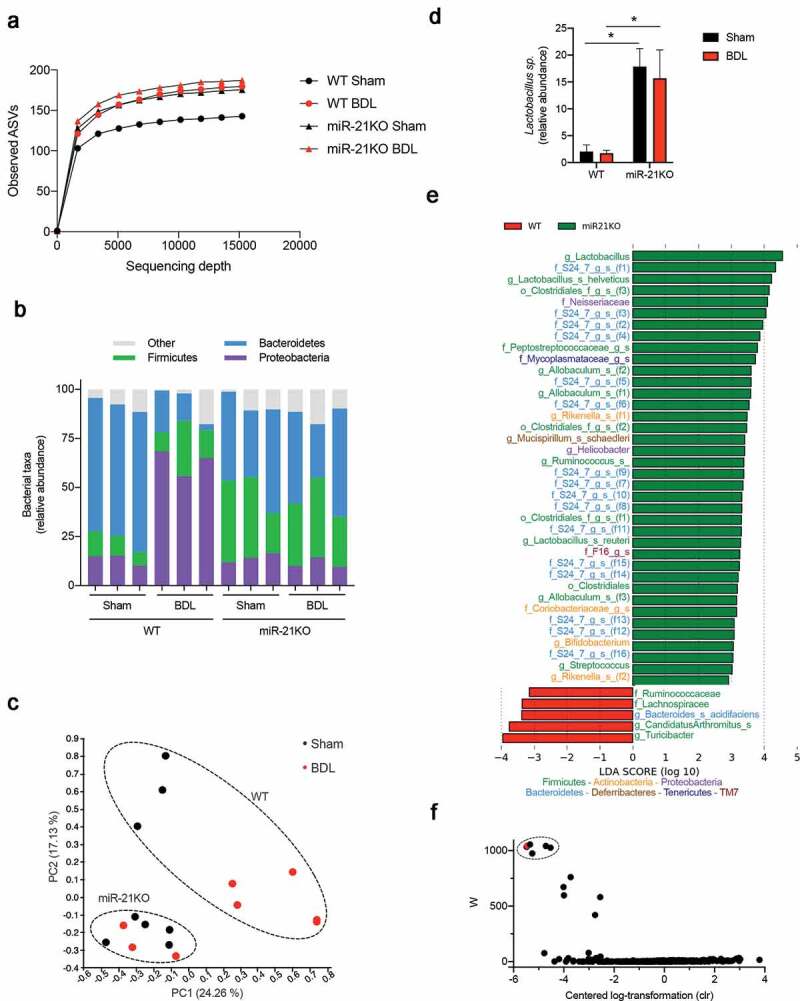Figure 3.

miR-21KO mice are protected from small intestinal dysbiosis. (a) Alpha diversity measured by observed OTU in WT and miR-21KO mice after either sham operation or BDL for 3 days. (b) Relative abundance of bacterial phyla in WT and miR-21KO mice after either sham operation or BDL for 3 days. (c) Principal component analysis (PCoA) of the β-diversity metric Bray-Curtis with PC1 and PC2 separating WT (black, Sham; red, BDL) and miR-21KO (black, Sham; red, BDL) mice after either sham operation or BDL for 3 days. (d) Relative abundances of Lactobacillus spp. in WT and miR-21KO mice after either sham operation or BDL for 3 days, mean values were calculated as fold change versus sham WT with error bars ± SEM of 4–6 individual mice and statistical analysis performed with ANOVA Tukey’s multiple comparisons test. *p < .05. (e) Linear discriminant analysis effective size (LEfSe) with Kruskal-Wallis test among classes and Wilcoxon test between subclasses. Taxa shown were significantly different between WT and miR-21KO mice after either sham or BDL for 3 days (p < .05). (f) Analysis of composition of microbiomes (ANCOM) between WT and miR-21KO mice after either sham or BDL 3 days (dash circle identifies the five significantly different features across the X and Y groups; red-marker indicates Lactobacillus helveticus feature)
